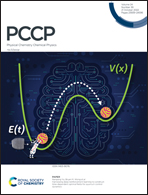Comparison of the hydrogen extraction reactions of isopentane molecules and ions
Abstract
In plasma-assisted combustion, excited species, ions, radicals, and other active intermediates can be produced by the excitation, ionization, and dissociation processes, which are conducive to steady combustion under the conditions of low temperature and pressure. Positive ions are reported to play an important role in electron impact ionization of fuels, but the associated kinetic processes are rarely discussed owing to the lack of experimental data and uncertain reaction pathways in the model. As they are the smallest geometric structures with primary, secondary, and tertiary hydrogen atoms, a study is presented to discuss the hydrogen abstraction potential energy surfaces of isopentane molecules and positive ions by hydrogen radicals at the DLPNO-CCSD(T)/aug-cc-pVTZ//B3LYP-D3(BJ)/6-311G(2df,2p) and DLPNO-CCSD(T)/aug-cc-pVTZ//M06-2x-D3/ma-def2-TZVP levels. The strengths of C–C and C–H bonds were characterized by bond order analyses to predict changes in the active sites of isopentane molecules and positive ions. Molecular orbitals were analyzed to identify simple feature patterns for establishing forming rules, showing consistency with the potential energy surface (PES) analysis. Structure selectivity of different reactions was discussed based on the predicted rate constant calculations in the temperature range of 300–2000 K, and the mechanisms were compared based on the isopentane pyrolysis model constructed with the combination of Reaction Mechanism Generator (RMG) and updated rate constants determined in this work.



 Please wait while we load your content...
Please wait while we load your content...